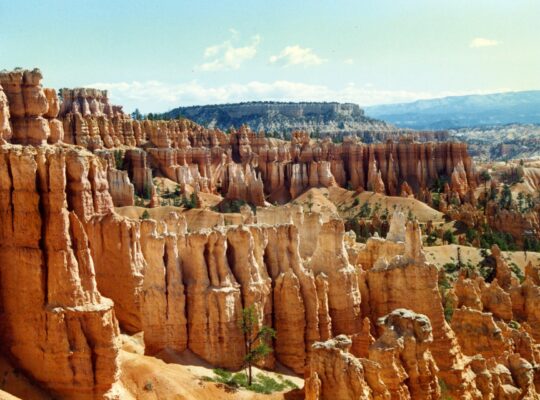Beyond the Road: How Wildlife Crossings are Connecting Ecosystems and Saving Lives
The steady expansion of roads across the globe has brought unprecedented convenience to human lives, but it comes at a cost. Habitat fragmentation, a direct result of road construction, poses a severe threat to wildlife populations and ecosystems. Animals attempting to navigate these roadways face a perilous journey, resulting in tragic collisions and loss of biodiversity. However, emerging as a beacon of hope in this crisis are wildlife crossings – innovative structures designed to reconnect fragmented habitats. In this article, we delve into the significance of these crossings, exploring their global impact and the promise they hold for a safer, more sustainable future.
At the forefront of the wildlife crossing movement is Banff National Park in Canada, a pioneer in constructing dedicated structures to facilitate the safe movement of animals across busy highways. Banff’s wildlife crossings have demonstrated remarkable success in reducing animal collisions, offering a model for the world to emulate. Supported by extensive research, these structures are proving to be more than mere engineering feats; they are critical tools for wildlife conservation.
Studies conducted in Banff have provided valuable insights into the effectiveness of wildlife crossings. By tracking the movements of various species, researchers have been able to quantify a significant decline in the number of wildlife-vehicle collisions. This evidence not only underscores the success of the crossings but also strengthens the case for their widespread adoption.
Banff’s success has inspired similar initiatives around the world, sparking a global movement to mitigate the impact of roads on wildlife. In Washington State, USA, wildlife crossings along the I-90 corridor are tailored to the needs of local fauna, offering safe passages amidst the bustling traffic. Meanwhile, tribal communities in Montana are adapting Banff’s model not only to protect wildlife but also to address human transportation needs, showcasing the versatility of these structures.
Costa Rica has embraced the concept with vigor, implementing a network of underpasses and overpasses that safeguard the country’s rich biodiversity. Notably, “sloth bridges” have been constructed to accommodate arboreal animals, highlighting the adaptability of wildlife crossings to diverse ecosystems.
The application of wildlife crossings extends beyond traditional wildlife conservation efforts. Initiatives like the “Wild Cats Friendly Roads Project” demonstrate the versatility of these structures in catering to diverse species. By addressing the specific needs of various animals, wildlife crossings become a powerful tool in preserving biodiversity on a broader scale.
The benefits of wildlife crossings reach far beyond protecting individual animals. These structures play a pivotal role in maintaining ecological balance, preventing isolated populations, and preserving genetic diversity. Furthermore, by reducing wildlife-vehicle collisions, they enhance public safety, mitigating the human and economic toll of accidents on roadways.
The economic advantages of wildlife crossings are not to be overlooked. The substantial reduction in collision costs, coupled with the potential for eco-tourism opportunities, presents a compelling case for increased investment in these structures. As society embraces the idea of coexisting with nature, wildlife crossings emerge as a tangible symbol of progress towards a more sustainable future.
In the face of habitat fragmentation and its dire consequences, wildlife crossings offer a glimmer of hope. The global adoption of this innovative approach signifies a collective commitment to harmonizing human infrastructure with the needs of wildlife. As we witness the positive outcomes in Banff and beyond, wildlife crossings stand as a symbol of our capacity to address environmental challenges.
The journey towards a safer, more sustainable future is underway, and wildlife crossings are paving the way. By connecting ecosystems, saving lives, and fostering coexistence, these structures herald a new era where progress and nature can coexist harmoniously. As we celebrate the success stories and ongoing initiatives, the global movement for wildlife crossings becomes a testament to our shared responsibility to protect the planet and its diverse inhabitants.










